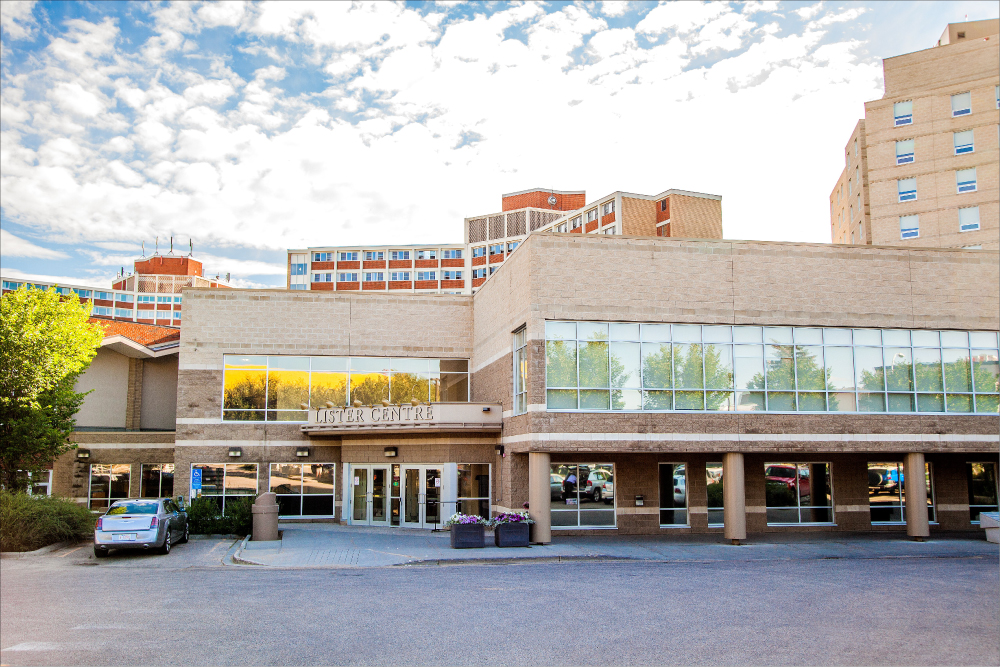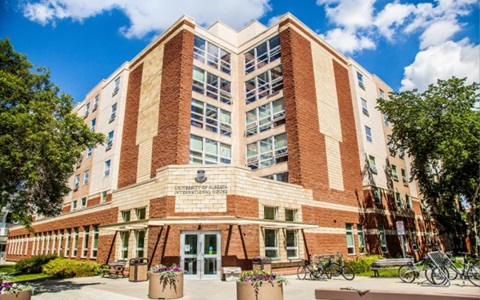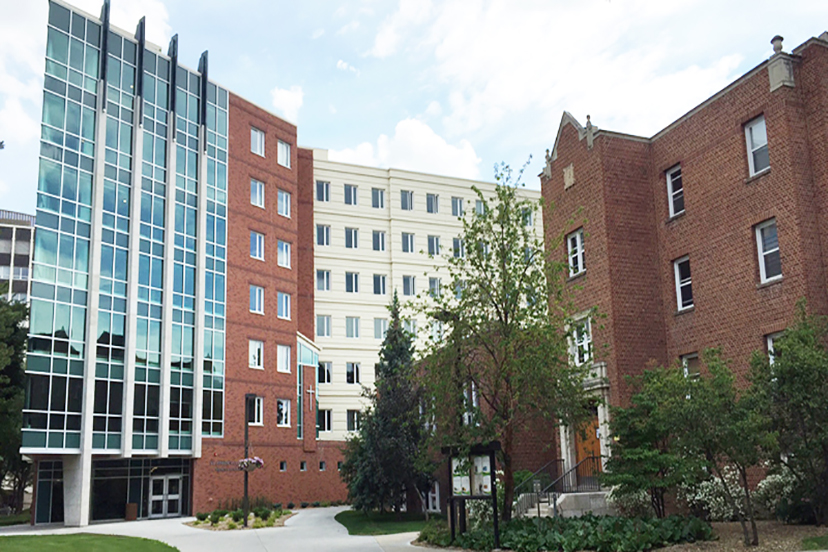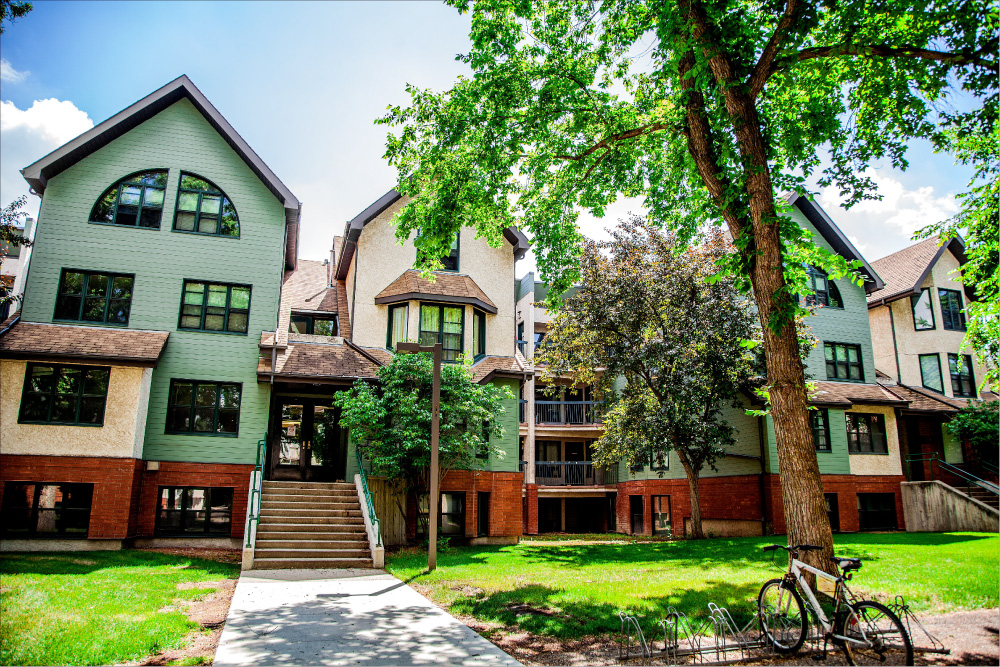By Morenike Ajidagba
Since graduating from the U of A with a BSc back in 2018, I have been reflecting on my university experience and I can say that living in university residences was vital in helping me get connected to the community I currently enjoy.
I remember arriving on campus as a doe-eyed first year student, excited for university life with the anticipation of what it would be like to finally live away from home. Would it be like I had always seen in the movies: the glorious independence and freedom, and the ability to get great grades without much studying taking place? I mean, how often did you see students break out a book to study in the multiple TV shows and movies we saw portraying university/college life?

[Editor’s Note: Billy’s story “First Year Myths: Expectations Vs Reality” is worth a read!]
The one aspect of university I was most excited about was living on campus, and I will say that my expectations were met because living in residence made my university experience more enjoyable and educational. University is really what you make of it, and I think choosing your residence has a lot to do with how university plays out. I remember one of the slogans for residence at the time was “a home away from home,” and that is what it felt like living on campus.
The first residence I lived in was Lister, and it was amazing for setting a precedent for university life. It is great for first years because it forces communal living so that you interact with people in the same position as you; i.e they are just as scared to be living away from home and just as excited to have freedom away from home. The kitchens, although spacious, were largely left unused due to the availability of a meal plan. The Lister dining hall provides healthy and nutritious meals whilst the Marina convenience store on the main floor provides you with late night “I really need a snack because I’m studying for exams and have nothing else to eat” food options. In the living areas, the large lounge areas encourage late night conversations and midnight discussions on random topics. Through these casual conversations you start to build your university community, something that will be very beneficial throughout your university life.
Occasionally, you may gather ’round the lounge area for a study session or to work on assignments since a lot of first year classes are quite universal regardless of what program you’re in. Remember:

Thus, the Lister experience can help to build your social and academic portfolio at the University of Alberta.

For my second year, I decided to try something different and applied to live in International House, fondly known as I-House. I really liked the sense of community that was encouraged and the mixing of different cultures. I-House was a great continuation of the sense of community developed while living in Lister. As things got a bit more intense in terms of academics, I-House seemed to offer a sense of serenity and calm. Living in I-House, I was still able to have more privacy and space. Having my own bathroom in my room was also quite convenient and it was a much-needed upgrade from Lister.
Moving to I-House also meant I had to start cooking my own meals. Oh yeah! Gone were the days of the meal plan from Lister. This was #realadulting now! The shared kitchens were usually a great hubbub of activity and provided the opportunity to engage with the various residents. I-House was a great opportunity for me to meet students from various backgrounds, in different programs, and at various levels of study. The mix of graduate and undergraduate students was great in that it offered the opportunity to learn different perspectives on life and academics. Many times while cooking in the kitchen, I got advice on study habits, managing money, and so much more! I-House was a really great experience that taught me how to interact with various people from different walks of life. I would say it is a much-needed experience to prepare you for adult living beyond the academic knowledge that university courses provide.

Afterwards I decided to move a little closer to the university campus by moving into St. Joseph’s College Women’s Residence. This helped encourage my spiritual growth as it was linked to the Christian college, and I couldn’t help but feel inspired walking past a prayer room every day on my way to class. I learnt the most here about the balance between having my own space, and knowing when to allow other people into that space. This was also where I started to see the benefits of the community that I had been building throughout my first two years at university. One of my friends actually recommended that I apply to live here, and we decided to live together. You learn skills such as living in close proximity with people, and how to share a small space effectively. Apart from that it was quite nice being able to make it to class after waking up ten minutes before class is about to start! Living so close to campus also makes it a bit easier if you’re someone who likes studying on campus late at night (#CameronNightOwlsUnite), you don’t have to worry too much about safety and walking back home because home is so close to campus. [Editor’s Note: Safewalk is a great program available to all students.] If that wasn’t secure enough, after curfew there is always a security guard on duty making sure only residents are entering and staying in the building overnight. The residence really made efforts to organize stress relief events such as Wine and Draw nights, as well as offering therapy sessions to encourage positive mental health among students.

The final residence I lived in was East Campus Village (now Aspen and Maple House). This was perhaps the best place to prepare me for life after school. The setup was very much apartment-style, which is what a typical living situation looks like after graduation. Depending on where your classes are, the distance from some campus buildings starts to prepare you for the mindset that where you live may not be close to where you work or study. The area is also quite residential with pretty nice scenery and outdoor spaces if you need to take a quick stroll outside as a break from studying. Apart from that, it is relatively close to Whyte Avenue which means you’re able to take a quick bus ride or a walk down either to hang out with friends or go do your grocery shopping to meal prep for the week. Ultimately, it is a manageable distance to the train and bus stations, which is quite useful during the cold winter months.

Well, there you have it folks: a quick breakdown of my experience living on campus. One thing I have learned is that university is what you make of it. A residence shouldn’t just be where you go to sleep at night, but rather the community that fuels you when the going gets tough. When I made intentional efforts to build a community, that really helped me thrive throughout my time spent on campus both academically and socially.
Enjoy your time on campus, it all goes by very fast. In the midst of trying to figure things out ensure to plug into your community and get connected! Have an awesome semester!
Helpful resources:
- First-year students living in Lister Centre, Peter Lougheed Hall, and Residence Saint-Jean can enrol in BaseCamp to kick-start new friendships and learn about residence life.
- Upper-year students in East Campus residences can attend Eastern Ascent, a program that’ll help you establish connections on campus, at the university, and within Edmonton.
- There are open houses and other resources for prospective upper-year residents.
- Check out orientation and Week of Welcome events.
- Book a campus tour to get familiar with all that campus has to offer.

Morenike graduated with a degree in Biochemistry from the University of Alberta in June 2018. She was born in Nigeria, grew up in England, and currently resides in Edmonton. She has a passion for communications and knowledge translation, and currently runs a personal development and lifestyle blog, Musings with Mo. She loves reading, blogging, listening to music, chatting, eating, and travelingMusings with Mo. She loves reading, blogging, listening to music, chatting, eating, and traveling